Every ‘Lord of the Rings’ Easter Egg in ‘The Rings of Power’ So Far
Middle Earth! Elves! Dwarves! Men! Wizards! Halflings!
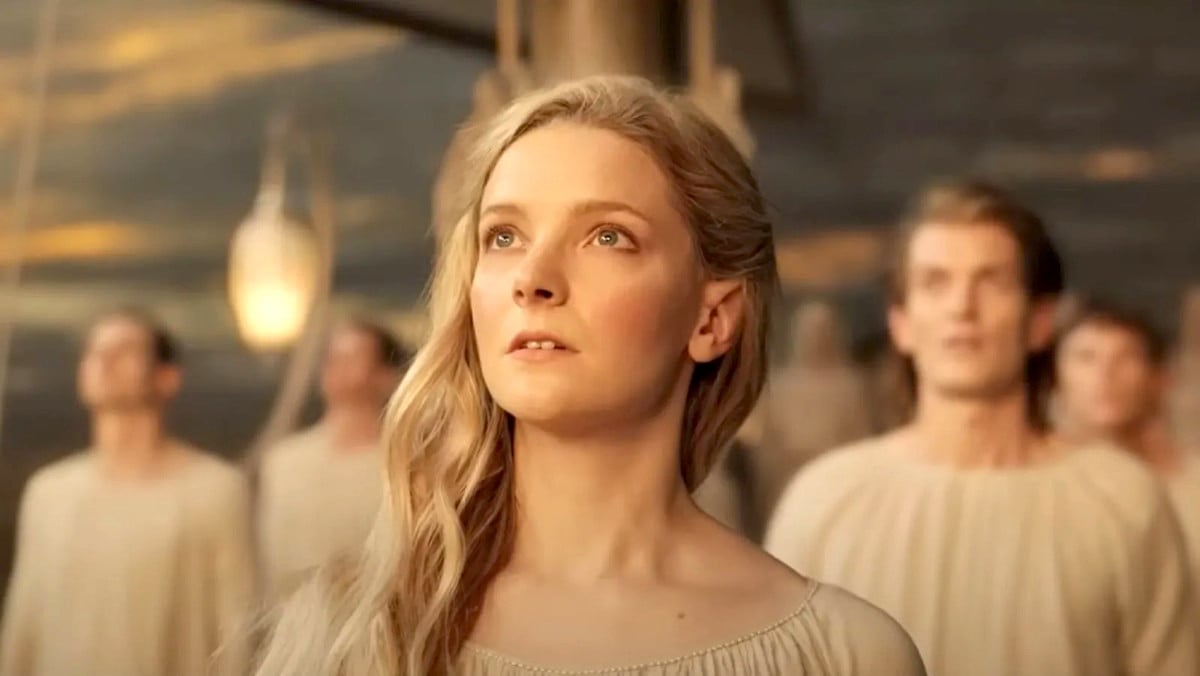
In Amazon Studios’ new fantasy series The Lord of the Rings: The Rings of Power, we return to J.R.R. Tolkien’s Middle Earth in the Second Age, which could be anywhere between three and eight thousand years before the events of Lord of the Rings. Thankfully, there are still plenty of familiar sights and sounds, as well as mysteries to uncover. Here’s the dragon’s hoard of easter eggs!
Now updated through episode 8!
Silmarillion
Rings of Power is supposedly an adaptation of various works, sources, and notes Tolkien made about the history of Middle Earth. However, this show is arguably more of a prequel to the Peter Jackson Lord of the Rings and Hobbit trilogies than it is an adaptation of Tolkein’s writing, partially due to not having the rights to The Silmarillion and other works featuring the earlier ages of Middle Earth. Visually, it also has some movie-familiar aesthetics.
That doesn’t mean references to The Silmarillion are non-existent:
They mention that Morgoth gazed upon the Silmarils, the legendary elf-made jewels that contain the light of the Two trees, for weeks after he stole them and was only torn away from their beauty when he shed a tear and saw his reflection in it.
On Rings of Power, the memorial statues carved into still-living trees of the elven city of Lindon feature a handful of characters from the story, including Lúthien and the hound of Valinor, Huan.
Lúthien is also alluded to when the characters talk about Elf/Human relationships, having been an elf maiden who fell in love with a mortal man, Adan Beren.
Elf/Human relationships
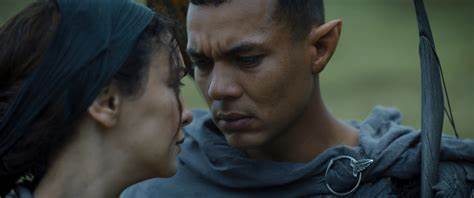
The show makes multiple references to the few and far between relationships between Elves and Men, with two new characters, the Elf Arondir and the human healer Bronwyn, doing their best to forge their own path. Though the fact that LoTR’s Aragorn and Arwen were supposedly only the third recorded coupling of a Human and an Elf does not bode well for this couple.
Trees
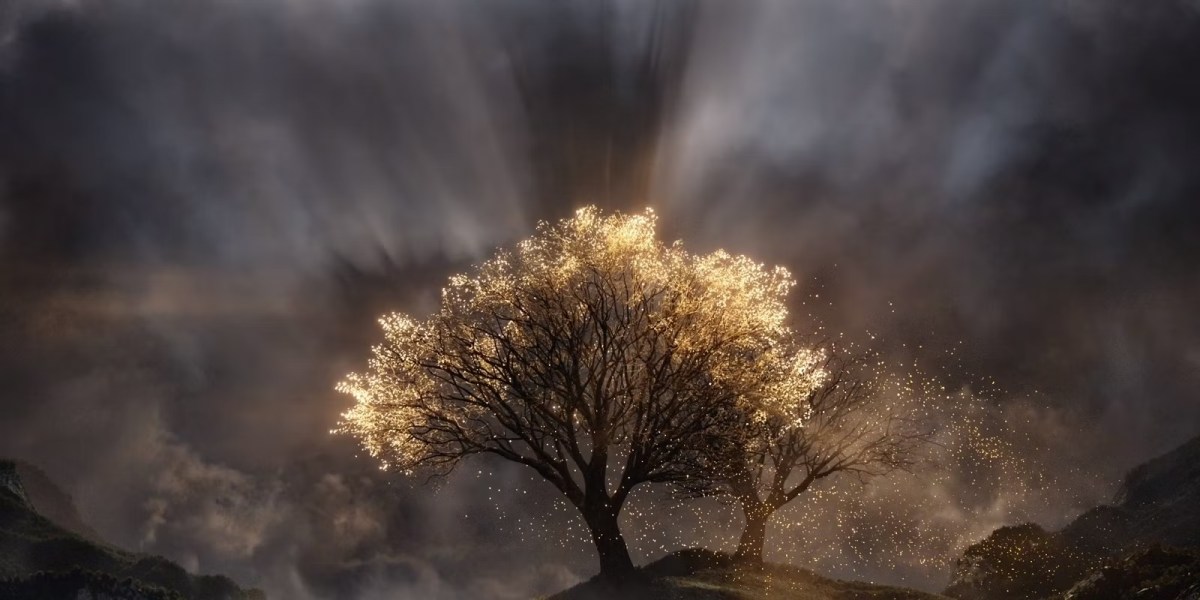
One of the most important features of note in the Elvish homeland of Valinor is the two great trees that grow over the land, Telperion and Laurelin, whose fruits would become the sun and the moon, hence why they had light before the first sunrise.
The deaths of these trees also carry on the theme of “the health of the land being a reflection of the fight between good and evil.” When evil prospers, the trees are dead or dying, food rots or turns to poison. When good triumphs, the flowers bloom and nature is set right again. Thus, the focus on Elvish Saplings growing inside Dwarven kingdoms and cows’ udders spilling black bile being metaphors for the state of Middle Earth.
Also, the Numenor white tree losing petals evokes the almost dead tree of Gondor and shows the dangers of corruption and the selfishness of man.
Phrases
Multiple phrases from the Peter Jackson series have been referenced in some form or another:
“Middle Earth being full of strange creatures beyond count,” “You’ve only just arrived”, and “What devilry is this,” some of which are admittedly very stock phrases, but echo certain scenes from the movies.
They also deliberately mirror certain scenes, with Galadriel taking on an ice troll similar to the cave troll that the Fellowship encountered, Galadriel providing the voice over exposition at the beginning, and beginning with a battle between the Elves and the forces of evil.
The Symbol of Sauron
Early in the first episode, Galadriel finds a mark of Sauron upon her brother, which is later found upon anvils and a shattered sword. The symbol looks similar to the Eye in the Tower that would search endlessly for the Ring. The sword and anvil that carry its mark may be connected to The Unseen World, or the world from which many powerful magics derive.
Galadriel as a warrior
Viewers coming from Peter Jackson’s series may be shocked to see Galadriel decked out in armor and wielding swords and knives rather than magic. However, in Tolkein’s original novels, Galadriel was described as a commander, an Amazon (well that feels somewhat prescient given the company producing the show), and as having commanded armies. Seems like this show will be showing us this rather than telling us these facets of Galadriel.
Maps of Middle Earth
One common transition technique from the Peter Jackson movies was the flyover of maps of Middle Earth that then faded into showing the beautiful landscape. The showrunners have borrowed the technique for Rings of Power, helping in the world building and establishment of different parties and their general relations to each other.
Young Elrond
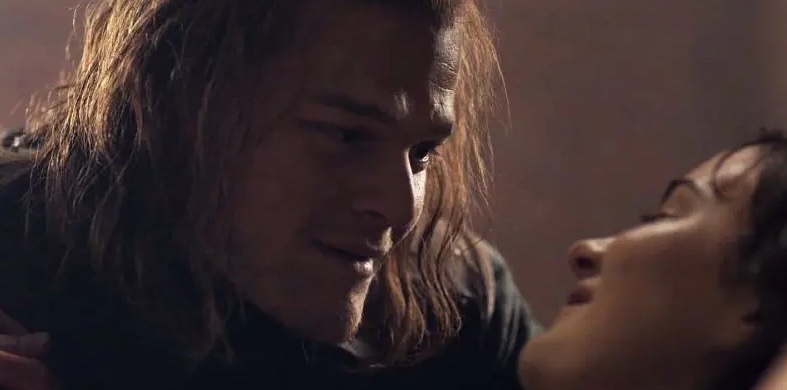
Not exactly a Lord of the Rings reference but if young Elrond looks familiar to Game of Thrones fans, it’s likely because his actor (Robert Aramayo) previously played the young Ned Stark during flashbacks to Robert’s Rebellion. (Does that mean somewhere in the multiverse, Arwen is siblings with the Stark children lol.)
Fireworks
When Galadriel and her squadron are honored for their service, we get a sight of the magical fireworks of Middle Earth, taking impossible shapes such as butterflies, an insect which would eventually ferry messages between Galadriel and Gandalf.
Elves go home
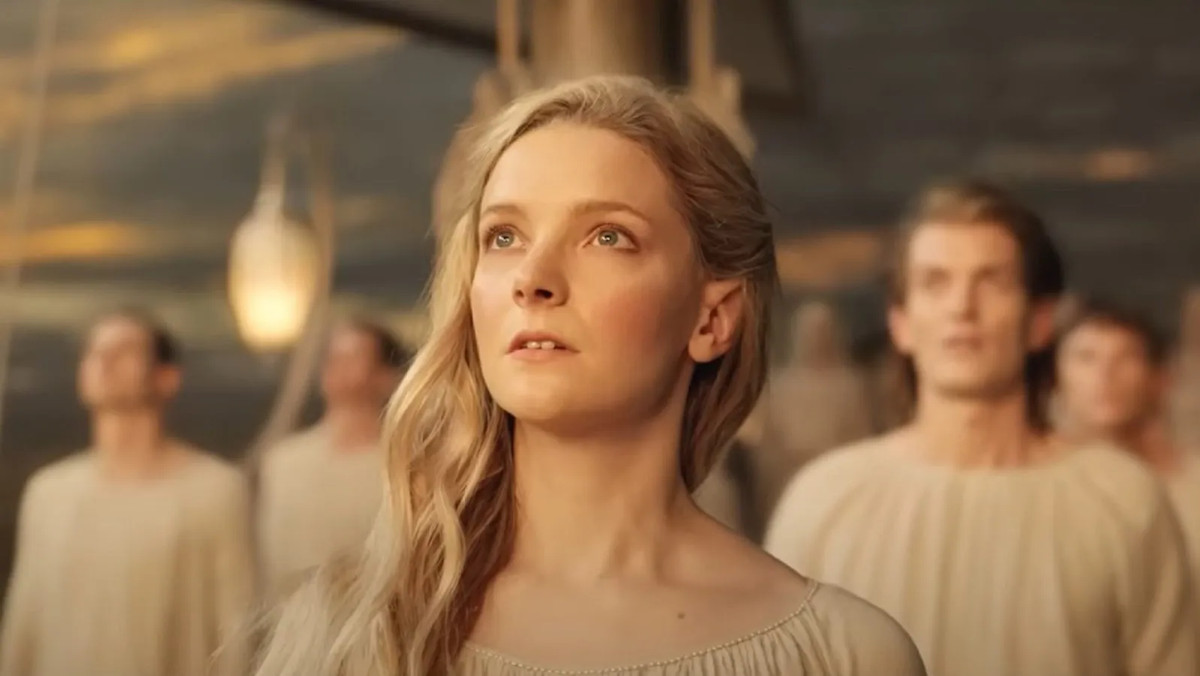
One of the major themes of Lord of the Rings is the desire to go home, and what that means to different people. In the first episode, Elrond attempts to convince Galadriel to return to the homeland of the elves to escape the horrors of war that continue to haunt her. This mirrors his later attempts to sway his daughter, Arwen, into leaving Middle Earth and denying herself a future with Aragorn. Thankfully, both women decide against it in favor of taking a chance and joining the fight against evil.
Shattered Sword
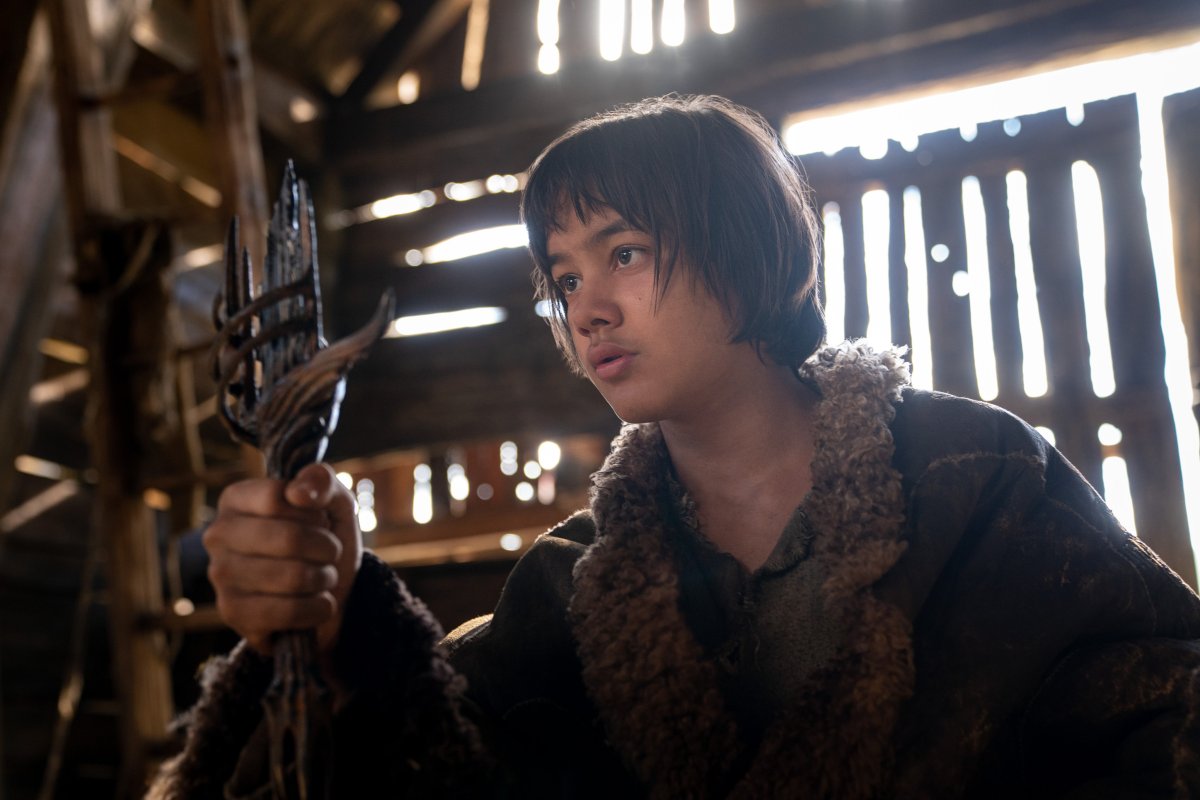
In the second episode of the series, a human boy, Theo, finds a shattered sword carrying the symbol of Sauron, a sword that seems to grow as it absorbs the boy’s blood. The sword seems to be a reference to the shards of Narsil, the shattered blade of the one true King that would allow Aragorn to reclaim his heritage and call upon the Army of the Dead.
As of episode 6, this sword becomes the main MacGuffin the Orcs were seeking and also becomes the sword in the stone that unlocks the dam and floods the Orcs tunnel system and leads to Mount Doom erupting.
Numenor
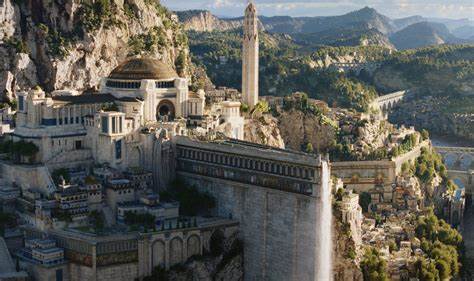
The architecture of Numenor greatly resembles the city of Gondor, which makes sense as the people of Numenor will eventually follow their King Isildur and create the City of Gondor. It even has a sapling from the Elvish tree that blooms when the city prospers.
Isildur
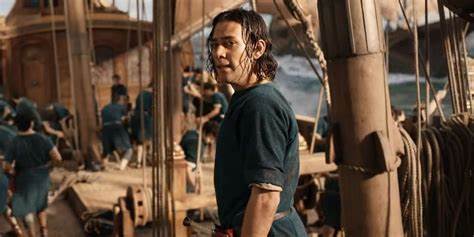
Obviously, you cannot tell the story of Sauron without bringing in Isildur, who is shown here as a sailor learning the ropes. Unfortunately, he’s already hearing voices call out to him, showing the character’s potential for distraction / temptation. On the plus side, he seems a bit more like his descendant Aragorn and is supportive of his sister’s apprenticeship. It’s an interesting shift as the world of men has been shown to be a bit more patriarchal than that of the Elves but here, Numenor is being led by a woman of color and seems to not balk at an “She-Elf” commander (thought some Numenor men make some assumptions about Hallbrand and Galadriel’s relationship).
Halbrand
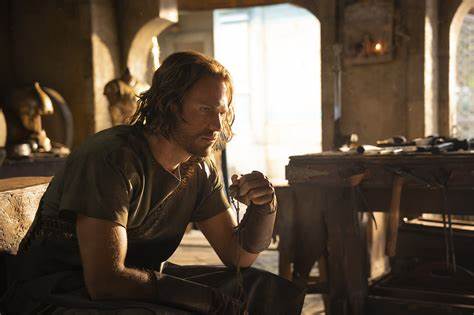
Isildur isn’t the only character evoking Aragorn in the show; Halbrand is revealed to be a King in hiding due to the fact that his ancestor sided with Sauron and Morgoth. He just wants to start a new life and leave his past behind, but the unfortunate truth of Middle Earth is that the past has awful ways of coming back to haunt us (literally in the case of cursed rings and ghosts).
Updated as of episode 8: Halbrand is now confirmed to be Sauron and only pretending to be King, making Halbrand the show’s interpretation of Anatar, Sauron’s beautiful Elven form he used to deceive others. Obviously, he’s now the big bad of the series but he’s also less of the unstoppable Dark Lord that we’ve seen flashes of and more of a Denethor or Wormtongue figure, manipulating others and playing a false king in order to get what he wants. His attempted swaying of Galadriel also really plays into the Wormtongue parallels, even using the ‘death’ of her brother against her as Grima did against Eowyn.
Orcs vs Trees
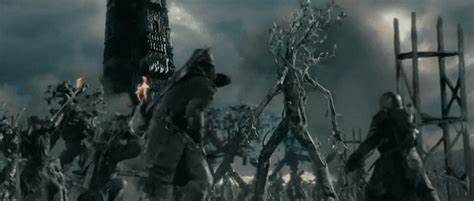
Meanwhile, Arondir, his fellow Elves, and the humans of the Southlands are forced into slavery, digging trenches and uprooting trees for the Orcs. This evokes Saruman’s razing of forests, which eventually drew the ire of the Ents (with a bit of prodding from Merry and Pippin). Given that Treebeard is “the oldest living thing to walk the earth,” we might get a cameo from him in the near future.
The Great Wave
A recurring image in Tolkein’s writing is a great wave that washes away a whole civilization. He originally had Faramir dream of it as a warning to the fall of Gondor, but Peter Jackson’s movies instead gave the dream to Eowyn. The dream occurs again as a vision warning the King of Numenor of what was given and what can be taken away if his people turn away from the Valar. But it may be a self-fulfilling prophecy as the king went mad and lost his peoples’ faith in his leadership, leading to his daughter and Chancellor (and future / final King of Numenor) Ar-Pharazôn rising to power.
Mithril
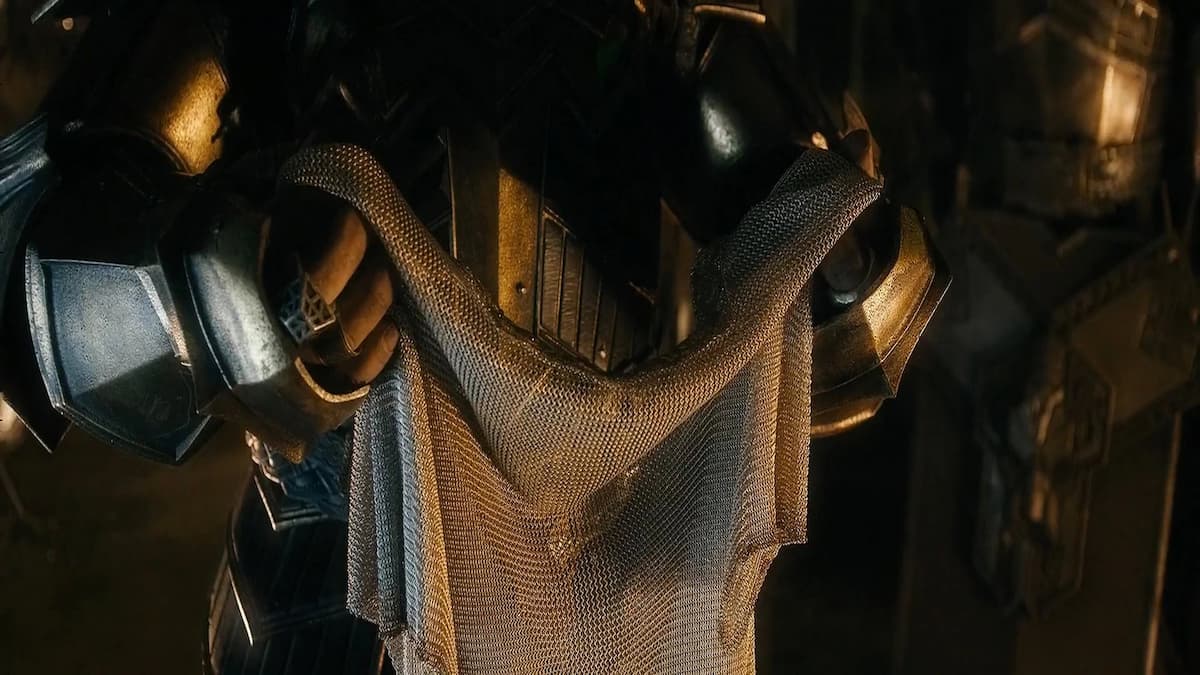
The discovery of mithril is a turning point in the power dynamics between Dwarves and Elves and thus Durin swears Elrond to secrecy. Though he has been able to keep his word thus far, we’ll see how it continues as the elves tree continues to decline.
Nenya, Galadriel’s ring of power, will be the only ring made of mithril, indicating she may have a solid relationship with the dwarves.
The Siege
The whole siege of the watchtower evokes the Battle of Helm’s deep, though somewhat in reverse, retreating and then barricading in a new location.
The last second save of the Southland villagers at the hands of the Numenor army evokes the ending of Helm’s Deep and Gandalf riding over the horizon and harkening in the dawn with reinforcements. Even their helmets resemble that of the Rohirim.
Orodruin
The big reveal of this episode was of the Orcs plan to create their homeland by awakening the dormant volacano (which they call Orodruin but we know better as Mount Doom) and blackening the sky so that the light of the sun will never harm them. At this point, the Orcs are following Adar the dark elf, who sees Sauron as an enemy, meaning the Orcs are not technically allied with the Dark Lord yet. However, now that they have created the forge of the One Ring, it’s only natural that Sauron will take notice of them and bind them to his service.
Eryn Galen
The forest the Stranger wanders into the Greenwood, which will later become Mirkwood, the forest through which Bilbo and the Dwarves will travel through on their quest to Erebor. This was a bit of false foreshadowing, with the white witches claiming the Stranger is Sauron, in a Forest that will eventually be poisoned by Sauron’s dark magicks.
The Stranger
I can finally talk about the stranger and how yes, he is most likely Gandalf. He’s a confirmed wizard who wears grey, loves the Harfoots (predecessors to Hobbits), and uses a long staff to wield his power. Either Saruman is gonna make even more of a heel-turn than we previously thought or he’s Gandalf. He also references many Gandalf lines like “always follow your nose.”
Minor easter eggs/tropes in episodes 7 and 8:
Disa appears to be turning into or revealing herself to be a Lady Macbeth-style manipulator, with her pushing her husband to defy his father and king and assuring him that one day, they will be the ones in charge of mining the mithril.
Isildur vanishing is likely a reference to Aragorn getting swept away by the river and later found by his horse. We’ll have to wait until next season for the conclusion of that. Also, his sister looking into a seeing stone evokes his descendant using such a stone to call out Sauron in-particular and indicates that she might turn into a Cassandra-like figure who sees what is coming but is powerless to stop it.
The Mithril being dropped into a vat of pure molten gold and silver briefly resembles the Eye of Sauron.
What was your favorite easter egg? Comment below!
Have a tip we should know? [email protected]
